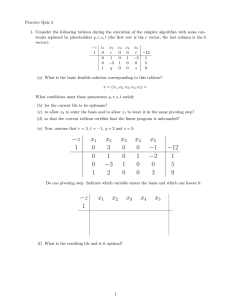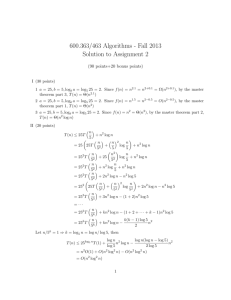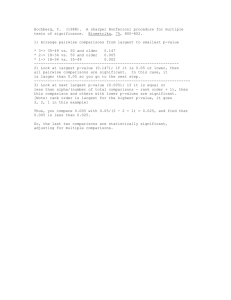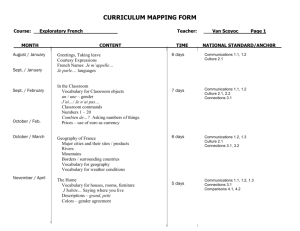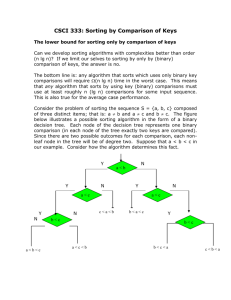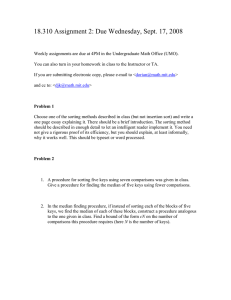D.E. Knuth, The art of computer programming volume 3 (Sorting and
advertisement
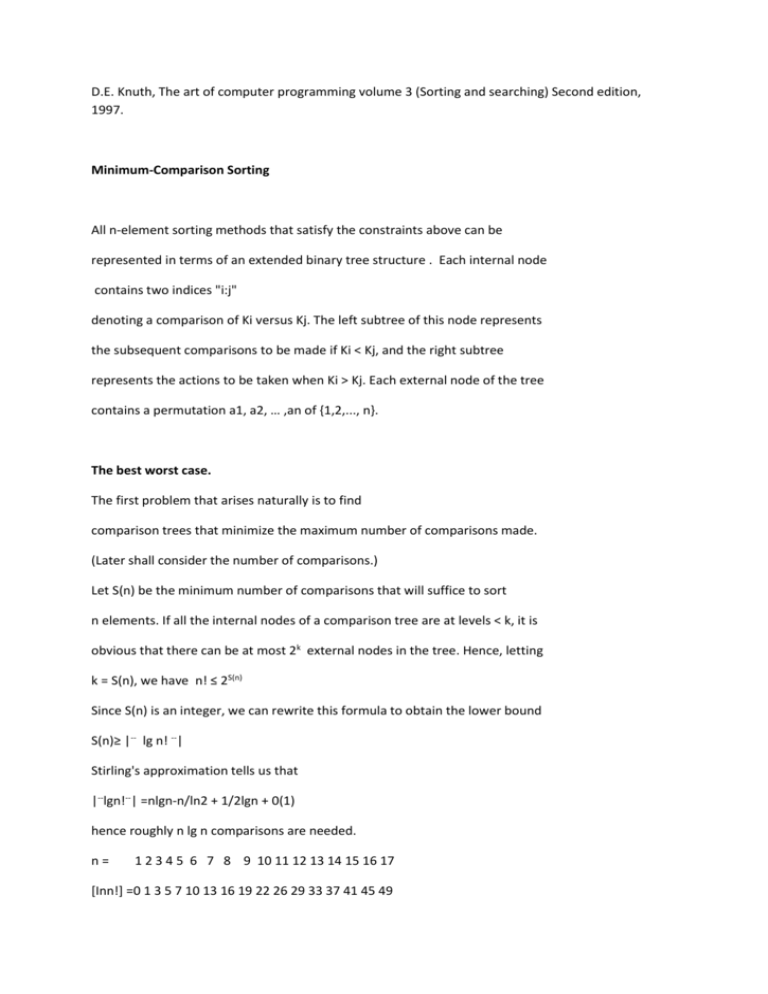
D.E. Knuth, The art of computer programming volume 3 (Sorting and searching) Second edition,
1997.
Minimum-Comparison Sorting
All n-element sorting methods that satisfy the constraints above can be
represented in terms of an extended binary tree structure . Each internal node
contains two indices "i:j"
denoting a comparison of Ki versus Kj. The left subtree of this node represents
the subsequent comparisons to be made if Ki < Kj, and the right subtree
represents the actions to be taken when Ki > Kj. Each external node of the tree
contains a permutation a1, a2, … ,an of {1,2,..., n}.
The best worst case.
The first problem that arises naturally is to find
comparison trees that minimize the maximum number of comparisons made.
(Later shall consider the number of comparisons.)
Let S(n) be the minimum number of comparisons that will suffice to sort
n elements. If all the internal nodes of a comparison tree are at levels < k, it is
obvious that there can be at most 2k external nodes in the tree. Hence, letting
k = S(n), we have n! ≤ 2S(n)
Since S(n) is an integer, we can rewrite this formula to obtain the lower bound
S(n)≥ |-- lg n! --|
Stirling's approximation tells us that
|--lgn!--| =nlgn-n/ln2 + 1/2lgn + 0(1)
hence roughly n lg n comparisons are needed.
n=
1 2 3 4 5 6 7 8 9 10 11 12 13 14 15 16 17
[Inn!] =0 1 3 5 7 10 13 16 19 22 26 29 33 37 41 45 49
B(n) = 0 1 3 5 8 11 14 17 21 25 29 33 37 41 45 49 54
L{n) = 0 1 3 5 9 11 14 17 25 27 30 33 38 41 45 49 65
We begin as if we were sorting four elements by merging, first comparing
K1:K2, then K3:K4, then the larger elements of these pairs. This produces a
configuration that may be diagrammed as
indicating that a < b < d and c < d. (It is convenient to represent known
ordering relations between elements by drawing directed graphs such as this,
where x is known to be less than y if and only if there is a path from x to y in
the graph.) At this point we insert the fifth element K5 = e into its proper place
among {a, b, d}; only two comparisons are needed, since we may compare it first
with b and then with a on d. This leaves one of four possibilities,
and in each case we can insert c among the remaining elements less than d in
two more comparisons. This method for sorting five elements was first found by
H. B. Demuth [Ph.D. thesis, Stanford University A956), 41-43].
